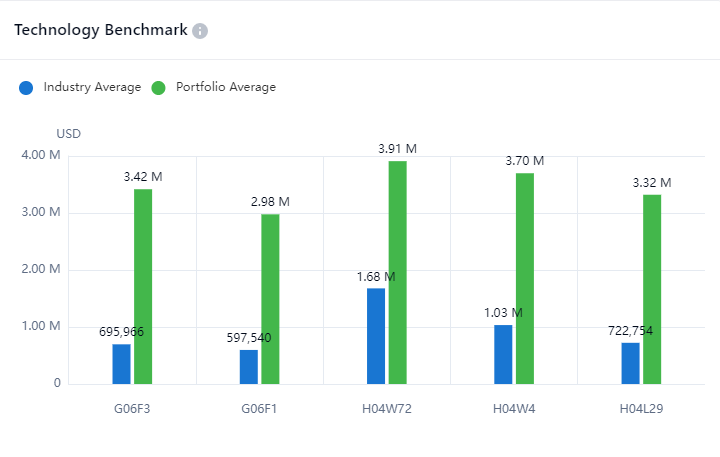
What is Intellectual Property?
In the world of commerce, intellectual property (IP) refers to creations of the mind, including inventions, literary and artistic works, designs, symbolism, names, and imagery. It may also be described as an intangible property derived from creative work, such as patents, copyrights, etc.
In this blog post, we’ll explore the different types of intellectual property rights, provide a handful of examples, and illustrate why they’re important.
What are the Four Types of Intellectual Property Rights?
Intellectual property (IP) can be protected in most countries under four categories:
- Patents
- Trademarks
- Copyrights
- Trade secrets
Each type of intellectual property has its own characteristics, requirements, and associated costs. Sometimes intellectual property can even be more valuable than physical assets for a company. In fact, recent data shows intangible assets (such as those listed above) account for 90% of the S&P 500’s total assets.
What Counts as Intellectual Property?
Some examples of intellectual property are as follows:
| Trademarks | Product names, logos, jingles |
| Registered designs | Appearance of a product including, shape, packaging, patterns, colors, decoration |
| Patents | Inventions and products such as machines and machine parts, tools, medicines |
| Trade Secrets | Recipes, chemical processes |
Knowing what intellectual property laws are is essential to an organization’s success. IP laws help you protect your assets and ensure you don’t infringe on anyone else’s idea, thereby reducing the likelihood of litigation.
Intellectual Property Rights in Action

Now we’ll provide examples of the four types of intellectual property rights in action, including:
- Google’s search algorithm trade secret
- Warner Bros and J.K Rowling’s Harry Potter copyright
- Apple’s trademarks
- Edison’s lightbulb patent
These examples highlight why it’s important to protect, manage, and advance your IP portfolio — and how you can turn IP assets into a competitive advantage.
Google’s Search Algorithm Trade Secret
Google owns more than 86% of the global search market, making it the #1 search engine in the world. So, what’s the key to its success?
Its top-secret search algorithm.
Developed in 1997, and continually updated, Google keeps its search algorithm trade secrets and associated updates hush-hush.
Harry Potter Copyright
21 years ago, no one could have predicted how wildly successful the Harry Potter franchise would become. The series, including seven books and eight movies, ushered J.K. Rowling into a league of her own. To date, the books have sold more than 500 million copies, earning J.K. Rowling $1 billion and making her the richest author in the world.
As the series grew in popularity, so did the legal protections. The trademarks and copyright are owned by Warners Bros and Rowling. And Rowling’s team is diligent about protecting their IP.
For example, in 2018, Warner Bros served the organizers of the Chestnut Hill “Harry Potter Festival” with a cease and desist letter. Based on the regulations outlined, the festival was prohibited from using the names, objects, place etc. from the Harry Potter franchise to promote the event. As a result, organizers updated the name to the “Wizards and Witches Festival.”
Apple’s Trademarks
According to recent data, Apple is the most valuable brand worldwide (followed closely by Amazon). Currently worth $355.08 billion, Apple’s long list of trademarks and strong brand recognition aids in its continued growth.

As shown above, Apple’s average patent values (by most prevalent IPC codes) are well above industry averages.
Edison’s Light Bulb Patent
In the fall of 1879, Thomas Edison submitted a patent application for his “incandescent lamp.” A few months later, on January 27th, 1880, it was granted.

This life-changing innovation paved the way for a modern convenience we all enjoy — electric light.
Why are Intellectual Property Rights Important
Intellectual property rights offer a competitive advantage over similar businesses. IP enhances your company’s value and can also help you market your products and services.
Having legal ownership over a design or concept, particularly one that is either still in the research and development stage or early production, is essential for a company or individual to finalize their own product.
Without intellectual property rights, any idea could be taken and used by a rival company before a patent or copyright is processed.
Got questions? We’ve got answers!
Connected Innovation Intelligence platforms like PatSnap enable companies to perform powerful searches, gain a 360-degree view of the competitive landscape, and verify novelty. To find out more about how PatSnap’s platform can help your business, click here.
Hot Topics on Discovery
Self driving Machine learning Edge computing Electric vehicle Blockchain Biofuel Image sensor Nanotechnology Robotics Raw material Metal Electrode Voltage Semiconductor Polymer Electricity Coating Fiber Display device Raw material Electric motor Ultimate tensile strength Nozzle Carbon Building construction
Alkyl Service life Electron Oxide Oxygen Solvent Control unit Flange Control system Drug Light source Piston Disease Electric power High pressure
Hot companies on Discovery
Apple Dynamic Network Services Oracle America Sensormatic Electronics Ikeda Bussan Huawei Technologies ZTE Mitsubishi Electric Engineering Samsung Electronics QUALCOMM Freddie Mac Federal National Mtge Siemens UnitedHealth Group General Electric Co AES Marriott International Shell Welltower HCA Healthcare Westconnex Meituan Thermo Fisher Scientific Sea Cruise Air Canada Lineage Logistics Lucid Motors National Treasury Mgmt Universal Music Group Microsoft Disney Baidu Google Oracle IBM BYD Tesla PatSnap Oppo Xiaomi DJI Facebook Spotify Netflix
